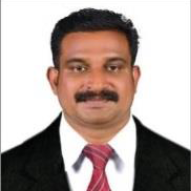
Madhusundar Nelson
Work place: Department of Computer Science and Engineering, Saveetha School of Engineering, Saveetha Institute of Medical and Technical Sciences, Chennai, India
E-mail: madhusundarn9022.sse@saveetha.com
Website: https://orcid.org/0009-0005-9325-6623
Research Interests:
Biography
Madhusundar Nelson is a dedicated researcher with a strong foundation in academia, industry, and revolutionary research. The past 2.5 years, I have been serving as a full-time Ph.D. Research Scholar at SIMATS, focusing on advanced fields such as Computer Vision, Deep Learning, and Graph Neural Networks.
Author Articles
An Intelligent Deep Learning Model for Neonatal Asphyxia Identification Using Linear Graph Neural Networks Optimized with African Vultures Algorithm
By Madhusundar Nelson Surendran Rajendran
DOI: https://doi.org/10.5815/ijem.2025.03.01, Pub. Date: 8 Jun. 2025
Birth marks the evolution from a fluid environment to one in which the baby breathes. Respiration difficulties after birth and in the first hours of life are common. Some babies will experience more severe respiration problems, and some of these will require medical care that only expert physicians can offer. In the first six hours of life, asphyxia is recognized. Neonatal asphyxia is a syndrome categorized by the deprivation of oxygen supply at birth and causes many morbidities and mortalities among newborns. Improved results depend on early detection and action. Using the African Vultures Algorithm that performs hyperparameter optimization expands accuracy and effectiveness in supporting the model. This integration improves the detection and sympathetic of neonatal asphyxia by using African Vultures Algorithm's capability to find fine results in high-dimensional places as well as the capability of LGNN to method structured clinical data. Herein, our model excels over present deep learning models and computer vision techniques for accurate detection of neonatal asphyxia. LGNN model achieved an accuracy of 98% in Dataset 1 and 96.5% in Dataset 2. F1-Score of the proposed model was achieved as 97.6% in Dataset 1 and 96.7% in Dataset 2. In Dataset 1 and Dataset 2, LGNN model as long as 97.9% and 97.1% precision, individually. In Dataset 1 and Dataset 2, the proposed (LGNN) provided 98.8% and 97.7% recall, one-to-one. Efficiently exploit the graph structure for feature aggregation and inference by employing a linear graph neural network architecture. Improved newborn outcomes are made possible by the suggested model, which is a potent diagnostic tool that also helps clinicians comprehend underlying pathophysiological causes.
[...] Read more.Other Articles
Subscribe to receive issue release notifications and newsletters from MECS Press journals